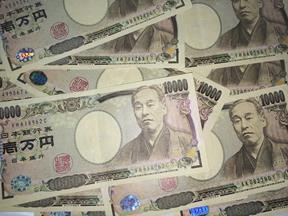The yen experienced a significant surge on Wednesday, with traders speculating that Japanese authorities had intervened to support the currency, which has been struggling against multi-decade lows. This notable movement in the yen stood out during a busy day in the currency markets, where the British pound also made headlines by hitting a one-year high following hotter-than-expected inflation data. Concurrently, the dollar dipped across the board, with the dollar index reaching a four-month low.
The dollar dropped 1% against the yen, falling to 156.75, extending its sudden decline that began shortly after the London trading session started. At one point, the dollar fell as low as 156.1 yen, having previously reached a 38-year high of 161.96 yen in early July. This sharp movement was attributed by traders to a likely intervention by Japan.
Japan's Ministry of Finance did not respond to requests for comment, but Masato Kanda, Japan's top currency diplomat, had previously indicated that the authorities would respond if speculators caused excessive moves, with no limit on how often they could intervene. Data from the Bank of Japan suggested that nearly 6 trillion yen was bought via intervention last Thursday and Friday.
Geoff Yu, senior macro strategist at BNY Mellon in London, commented, "Current valuations are still stretched, and the yen is still undervalued, so a bit more activism in FX markets from Japan is the way to correct any misalignments." He added, "But we have to wait for an official confirmation." The yen also gained significantly against other currencies. The euro fell 0.7% to 171.34 yen, while sterling dropped 0.62% to 204.2 yen.
The British pound rose 0.5%, hitting a one-year high against the dollar at $1.3032, following data showing UK inflation rose slightly more than expected. Headline inflation remained at 2% on an annual basis in June, against forecasts of a 1.9% increase, while services inflation came in at 5.7%. This data led traders to scale back bets on a rate cut from the Bank of England in August. Analysts at Nomura noted, "Today's strong services inflation numbers suggest the upcoming decision will be a close call. Much will now hinge on tomorrow's labor market report, and specifically pay growth." The pound also reached a near two-year high against the euro, which fell 0.18% to 83.85 pence, its lowest level since August 2022.
The dollar index, which tracks the dollar against six major currencies, fell 0.46% to 103.75. This decline was driven by signs of slowing inflation in the United States, boosting investor confidence that rate cuts are imminent. Investors have fully priced in a rate cut from the Federal Reserve in September, expecting over 60 basis points of easing by year-end.
While U.S. retail sales data pointed to consumer resilience and bolstered second-quarter growth prospects, it failed to alter market views. The New Zealand dollar rose 0.64% to $0.6087, supported by data showing high domestically driven inflation in the second quarter, despite missing headline figures.
The Swiss franc strengthened, reflecting its status as a low-yielding, safe-haven currency, possibly influenced by the yen's movements. The dollar was down 0.66% against the franc at 0.8877, while the euro dipped 0.4% to 0.9706. However, the euro gained against the dollar, rising 0.3% to $1.0933, a four-month high. The Australian dollar also edged up 0.15% to $0.6747.
This week, various Federal Reserve officials are scheduled to provide guidance on inflation and interest rates, adding to the market's focus on the upcoming rate cut decision. In Japan, investors await the National Consumer Price Index (CPI) report for June, set to be released on Thursday. This data will provide clues about whether the Bank of Japan will tighten monetary policy further in its upcoming meeting on July 31. Japan's annual National CPI excluding fresh food is estimated to have accelerated to 2.7% from May's reading of 2.5%.






